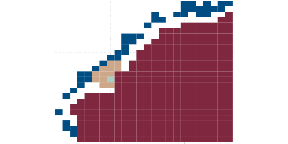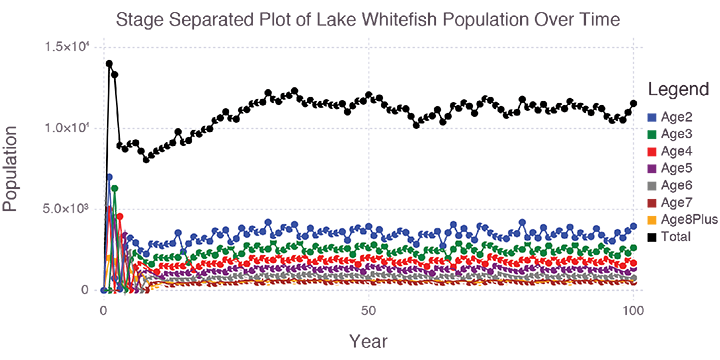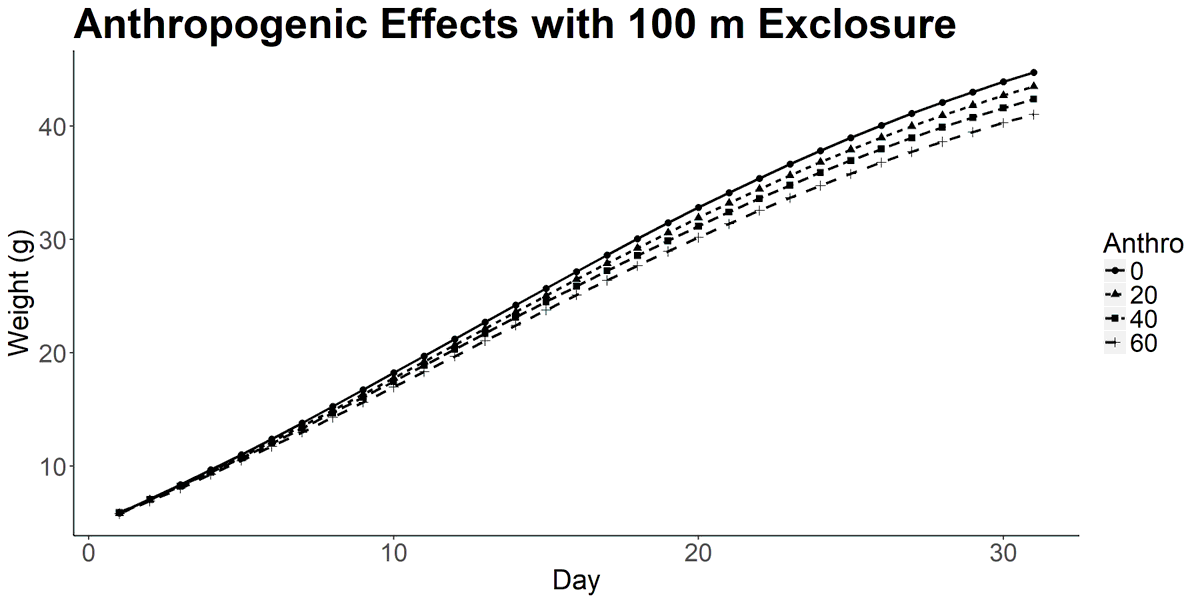My name is Brandon Edwards (@bedwards144), and I'll be tweeting to you LIVE from Guelph, ON Canada today. I plan to focus on the role of computer science (I'll call it #CompSci today) in #ornithology.
First, a bit about me!


I think (I hope) that will best showcase my path to discovering the amazing world of #CompSciBirding, and will let you discover it too! #ornitholoday
#ornitholoday #CompSciBirding
Now, I'm sure you know what side I'm on in the great #FishVsBirds debate on Twitter, but I won't open that can of worms today! 🤐
#ornitholoday #CompSciBirding
#ornitholoday #CompSciBirding
Enter: the Environmental Agent-based Model (eABM).
#ornitholoday #CompSciBirding
#ornitholoday #CompSciBirding
#ornitholoday #CompSciBirding
#ornitholoday #CompSciBirding
#ornitholoday #CompSciBirding
#ornitholoday #CompSciBirding
We can assign an ID to the agent to reference it throughout the simulation, and perhaps some other useful information such as location and age.
#ornitholoday #CompSciBirding

#ornitholoday #CompSciBirding
#ornitholoday #CompSciBirding
#ornitholoday #CompSciBirding

#ornitholoday #CompSciBirding
#ornitholoday #CompSciBirding

Now, some problems!
#ornitholoday #CompSciBirding
#ornitholoday #CompSciBirding
This isn't SO bad when we're talking about just one agent. But that's super boring.
#ornitholoday #CompSciBirding
We may want to simulate a city; say, the City of Guelph. So, instead of 1 agent, we are looking at *checks census information* 131,794 agents. That'll take up a LOT of space!
#ornitholoday #CompSciBirding
#ornitholoday #CompSciBirding
#ornitholoday #CompSciBirding
That's a total of 137,065,760 "computations" per simulation.
#ornitholoday #CompSciBirding
#ornitholoday #CompSciBirding
#ornitholoday #CompSciBirding
#ornitholoday #CompSciBirding
So, this is where the environmental agent-based model (eABM) comes into play!
#ornitholoday #CompSciBirding
#ornitholoday #CompSciBirding
#ornitholoday #CompSciBirding
But hear me out!
#ornitholoday #CompSciBirding
#ornitholoday #CompSciBirding
As we did before, we can start populating these agents with information that may or may not change through time. Let's start with depth. Assign each agent a value between 0-6 depending on its depth.
#ornitholoday #CompSciBirding

#ornitholoday #CompSciBirding

#ornitholoday #CompSciBirding
#ornitholoday #CompSciBirding
#ornitholoday #CompSciBirding

#ornitholoday #CompSciBirding
#ornitholoday #CompSciBirding
#ornitholoday #CompSciBirding
#ornitholoday #CompSciBirding
#ornitholoday #CompSciBirding

#ornitholoday #CompSciBirding

#ornitholoday #CompSciBirding
Gonna grab a quick bite to eat (my not-so-simulated energy levels are getting quite low), then I will (finally) move onto eABMs and birds!
#ornitholoday #CompSciBirding
#ornitholoday #CompSciBirding
Let's summarize what we've talked about so far!
Traditional agent-based models are a useful tool that can be used to simulate the dynamics of one or more animal species in their environment.
#ornitholoday #CompSciBirding
#ornitholoday #CompSciBirding
#ornitholoday #CompSciBirding
In the chronology of my time in University, this corresponds to my second year. At that point, I was getting rather comfortable with the methods of eABM, and I wanted to try to make my own.
#ornitholoday #CompSciBirding #ornithology
#ornitholoday #CompSciBirding #ornithology
#ornitholoday #CompSciBirding #ornithology #GLPIPL
#ornitholoday #CompSciBirding #ornithology #GLPIPL
#ornitholoday #CompSciBirding #ornithology
bayshorebroadcasting.ca/news_item.php?…
#ornitholoday #CompSciBirding #ornithology
#ornitholoday #CompSciBirding #GLPIPL
#ornitholoday #CompSciBirding #GLPIPL

#ornitholoday #CompSciBirding #GLPIPL #ornithology

#ornitholoday #CompSciBirding #GLPIPL #ornithology
#ornitholoday #CompSciBirding #ornithology
#ornitholoday #CompSciBirding #ornithology
#ornitholoday #CompSciBirding #ornithology
#ornitholoday #CompSciBirding #ornithology
#ornitholoday #CompSciBirding #ornithology

#ornitholoday #CompSciBirding #ornithology
#ornitholoday #CompSciBirding #ornithology
#ornitholoday #CompSciBirding #ornithology
#ornitholoday #CompSciBirding #ornithology
#ornitholoday #CompSciBirding #ornithology
#ornitholoday #CompSciBirding #ornithology
Experiment "0":
Simulate piping plover growth in a "perfect world" scenario. This gives us a baseline for which we can compare the effects of our other experiments.
#ornitholoday #CompSciBirding #ornithology
Run simulations with a probability of encountering a human at 20%, 40%, and 60% (20 simulations each).
#ornitholoday #CompSciBirding #ornithology
Run simulations with a probability of encountering a human at 20%, 40%, and 60% (20 simulations each), BUT add a nest exclosure.
#ornitholoday #CompSciBirding #ornithology
#ornitholoday #CompSciBirding #ornithology
#ornitholoday #CompSciBirding #ornithology
#ornitholoday #CompSciBirding #ornithology
#ornitholoday #CompSciBirding #ornithology

#ornitholoday #CompSciBirding #ornithology
#ornitholoday #CompSciBirding #ornithology

#ornitholoday #CompSciBirding #ornithology

#ornitholoday #CompSciBirding #ornithology

1) We showed that nest exclosures do, indeed, help to mitigate the effects of anthropogenic presence on piping plover hatchlings.
#ornitholoday #CompSciBirding #ornithology
#ornitholoday #CompSciBirding
#ornitholoday #CompSciBirding #ornithology
#ornitholoday #CompSciBirding #ornithology
So, to summarize my last block of tweets: we were able to apply the concept of an eABM toward the field of #ornithology and create one for use with the piping plover.
#ornitholoday #CompSciBirding
#ornitholoday #CompSciBirding #ornithology
#ornitholoday #CompSciBirding #ornithology
#ornitholoday #CompSciBirding #ornithology
#ornitholoday #CompSciBirding #ornithology
#ornitholoday #CompSciBirding #ornithology
#ornitholoday #CompSciBirding #ornithology
#ornitholoday #CompSciBirding #ornithology
#ornitholoday #CompSciBirding #ornithology
#ornitholoday #CompSciBirding #ornithology
#ornitholoday #CompSciBirding #ornithology
#ornitholoday #CompSciBirding #ornithology
#ornitholoday #CompSciBirding #ornithology
#ornitholoday #CompSciBirding #ornithology
#ornitholoday #CompSciBirding #ornithology
#ornitholoday #CompSciBirding #ornithology
#ornitholoday #CompSciBirding #ornithology
#ornitholoday #CompSciBirding #ornithology
#ornitholoday #CompSciBirding #ornithology
#ornitholoday #CompSciBirding #ornithology
Enter: #bbsBayes
#ornitholoday #CompSciBirding #ornithology
#ornitholoday #CompSciBirding #ornithology
#ornitholoday #CompSciBirding #ornithology #bbsBayes
#ornitholoday #CompSciBirding #ornithology #bbsBayes
#ornitholoday #CompSciBirding #ornithology #bbsBayes
#ornitholoday #CompSciBirding #ornithology #bbsBayes
#ornitholoday #CompSciBirding #ornithology #bbsBayes
#ornitholoday #CompSciBirding #ornithology #bbsBayes
#ornitholoday #CompSciBirding #ornithology #bbsBayes
#ornitholoday #CompSciBirding #ornithology #bbsBayes
#ornitholoday #CompSciBirding #ornithology #bbsBayes
#ornitholoday #CompSciBirding #ornithology #bbsBayes
Thanks so much!









